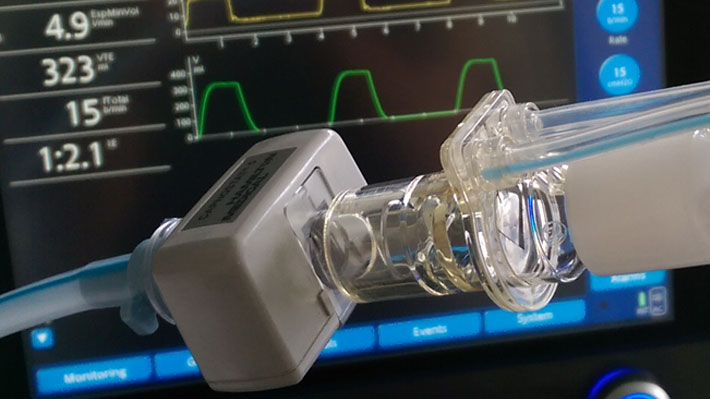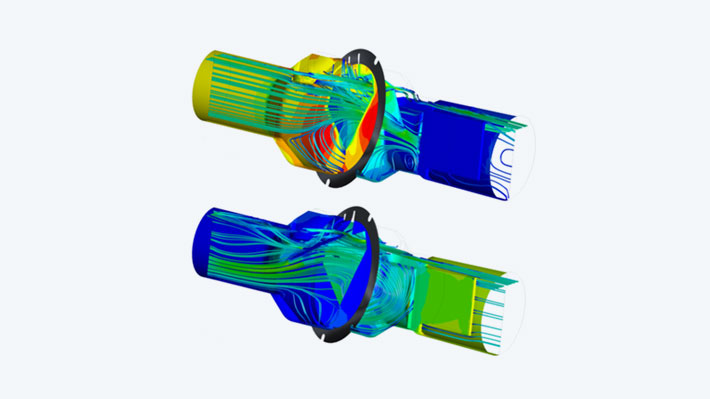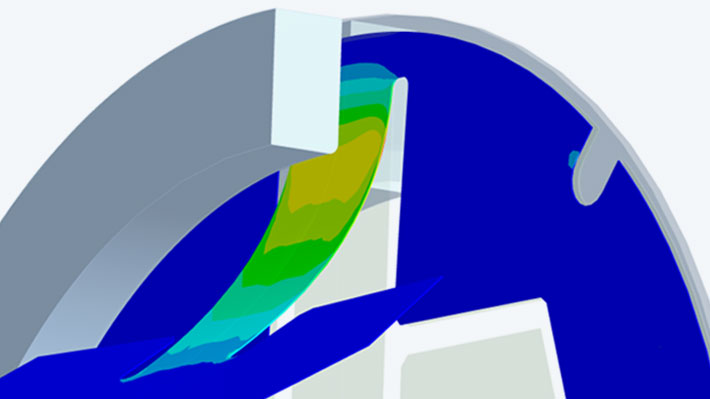Simulation in ventilation
Sector: Chemistry and pharmaceuticals, Consumer goods/durable goods, Health, Medical technology, Plastic and rubber, Precision mechanics and opticsSpecialist field: Fluid mechanics, Multiphysics, Structural mechanicsA ventilator must have a high fatigue strength. Verification through experimental validations in test series requires an enormous amount of time. The respiratory flow meter plays a key role in this process. Hamilton Medical AG has therefore commissioned CADFEM to accelerate this process using simulation.
Summary
Task
Product quality is at the heart of the ventilator development process. Since lengthy experimental validation is required to ensure fatigue strength over many breathing cycles, numerical prototyping was needed to guarantee that elaborate test setups would only need to be performed once.
Solution
A realistic simulation process was set up using the ANSYS Multiphysics platform. Occurring stresses and vibrations have been calculated in a two-way fluid-structure interaction (FSI) in ANSYS Workbench, including the flow field and structural deformations. In addition, a fatigue analysis has been provided.
Customer benefits
CADFEM was able to numerically validate and optimize the design of the respiratory flow meter in the simulation model. Subsequently, only one, correspondingly long, experimental aging test on a real prototype was necessary, in which the components were cyclically loaded continuously for two months. This made it possible to shorten the development cycle for an optimum variant and significantly minimize the costs compared to purely experimental testing of all variants.
Project Details
Task
Hamilton Medical AG offers a wide range of ventilators that are optimally suited for many different patient groups. Product quality is at the heart of the development process. Since lengthy experimental validation is required to ensure fatigue strength over many breathing cycles, numerical prototyping was needed to guarantee that measurement campaigns were only performed once.

Customer Benefit
CADFEM was able to numerically validate and optimize the design of the respiratory flow meter in the simulation model. Subsequently, only one, correspondingly long, experimental aging test on a real prototype was necessary, in which the components were cyclically loaded continuously for two months. This made it possible to shorten the development cycle for an optimum variant and significantly minimize the costs compared to purely experimental testing of all variants. The pressure-flow characteristic could be simulated and compared with the requirements for the measuring unit. The analysis made it possible to quickly identify the most critical points and improve the design, enabling unprecedented robustness while ensuring measurement accuracy.

Solution
A realistic simulation process was set up using the ANSYS Multiphysics platform. Stresses due to valve cycling and oscillations in turbulent flow were calculated using an unsteady two-way fluid-structure interaction (FSI) in ANSYS Workbench, including the flow field and structural deformations (see figures). Small and large stress oscillations at various frequencies could be considered in the fatigue analysis. Nonlinear frictional contacts between the loosely held valve diaphragm and the surrounding structure were taken into account.

Images: © Hamiltion Medical AG




